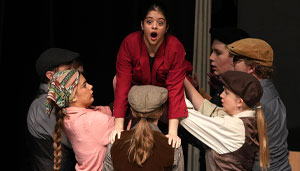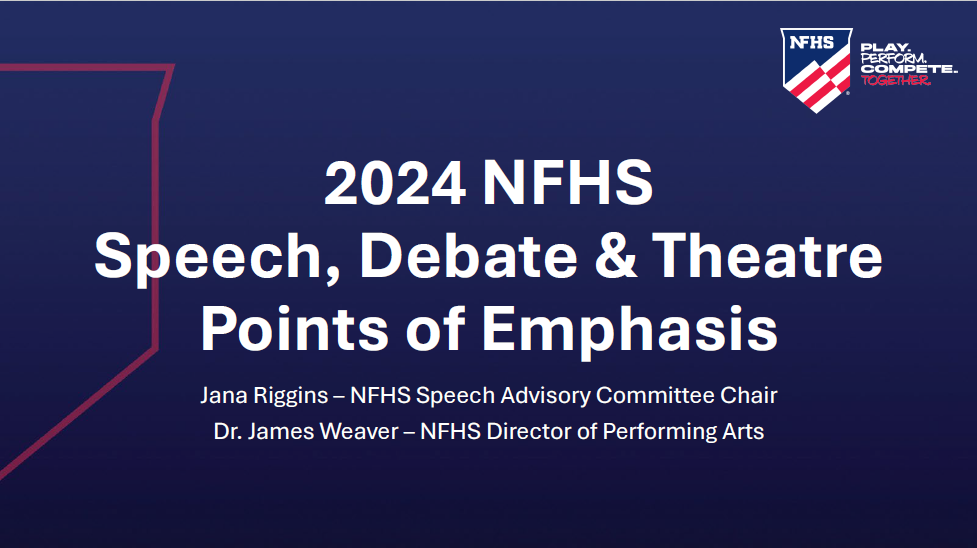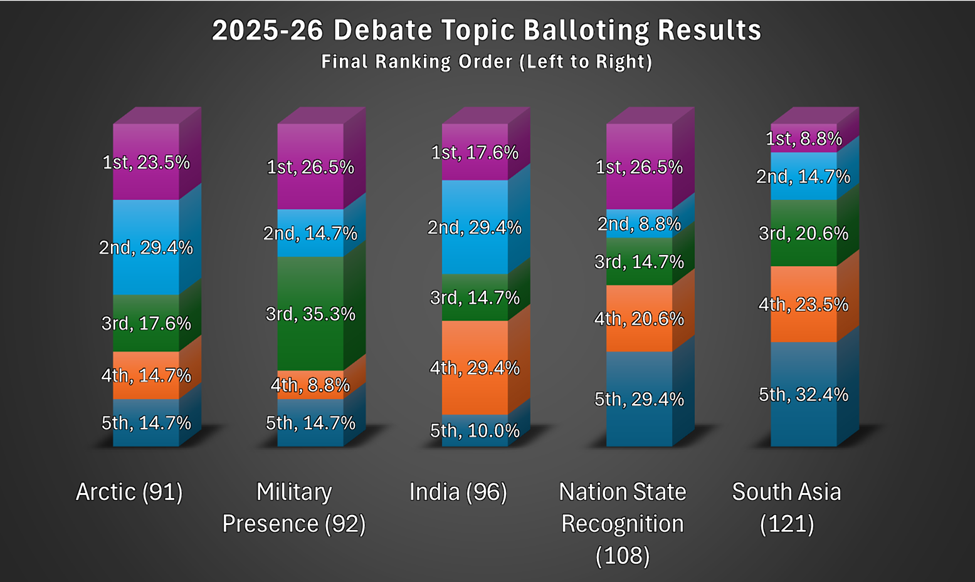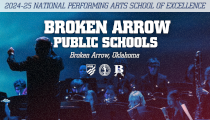Anxiety Disorders and Academic Debate: Societal Problems and Community Solutions
By Grant Brown on December 17, 2019 speech debate & theatre directors & judges article PrintThis article first appeared in the 2017 September/October issue of Rostrum, the official magazine of the National Speech & Debate Association (NSDA). Learn more about the NSDA at www.speechanddebate.org.
Anxiety disorders are increasingly prevalent in the 21st century, finding an especially strong foothold in high school aged students. 1 Currently, approximately one in four children aged 13 to 18 will experience one or more of a wide variety of anxiety disorders, including but not limited to post-traumatic stress disorder, obsessive compulsive disorder, generalized anxiety, and phobias. 2 This has produced a culture that is heavily influenced by anxiety, angst, and stress as a normalized part of its identity. The result is a kinship, of sorts—especially in academically demanding schools and activities such as debate—bonding around mental illness as a site of common experience.
While there cannot be a clear causal line from which we can trace the source of the increase in mental illness, there are many larger societal factors that can be extrapolated as contributors and ought to be examined. This begins with a simple fact that awareness of mental illness has been increasing steadily due to increased concern on behalf of schools, institutions, and the general public. This positively correlates with an increase in diagnoses as students become aware of symptoms in both themselves and others and seek treatment. This presents a reasoned argument to dissuade one from alarmist reactions to the presented statistics. Additionally, high school has increasingly shifted to base curriculum geared toward college preparation, which heightens a sense of competitiveness in teenage students. This school trend, and once again, anxiety itself, have been bolstered by an almost hallmark decrease in college acceptance rates,3 which normalizes unhealthy levels of commitment, involvement, and participation as part-and-parcel of being a proper student.
Debate presents, ultimately, a kind of catch-22. Students who are driven to attempt to achieve these idealized, general characteristics are often the same students who join debate. They are internally motivated, hard-working, and driven to succeed. The activity is thus incredibly alluring to those who struggle with anxiety (and/or obsession): it gives a sense of community to which one can belong, advertises an ability to better oneself socially, academically, and personally, and presents an outlet to channel racing-thoughts, obsessions, and compulsions into a rigorous and scholarly pursuit. However, a variety of students with anxiety in debate have expressed that it can also be incredibly destructive: it is structured around cut-throat competition, demands high amounts of research in a short amount of time, and can quickly become consumptive of all of one’s free time. This gives debate a dual potential—on one end offering an outlet, and on the other an additional source of stress.
Therefore, the activity, more than most, is faced with addressing issues of mental health. As educators, judges, and peers, we have unique roles to play in ensuring that the space of debate is inclusive and accessible for those with anxiety related struggles.
Coaches have a special place in the lives of debaters, simultaneously serving as an authority figure, mentor, and role model. This gives coaches, as educators, a great deal of power in how they can interact interpersonally with struggling students and shape a larger team culture.
With regard to interpersonal interactions, coaches need to be leery of a common problem when approaching a student with anxiety: instantly alienating a student by rejecting their self-image. Anxious students are heavily invested in the current social ethos of what it means to be successful, 4 sometimes obsessively, and an attempt to bulldoze their constructed identity is both ineffective and dangerous. Approaching a student with responses that perceptually demean the authenticity of their experience, asserting that they are unfounded, merely illusionary, or otherwise—“It’s all in your head!” or “It’s simple, just cut down your schedule and quit a few clubs!”—does little to allow a student to right themselves. Coaches should approach these situations as a helpful mediator, lending an ear and a voice of understanding concern, recognizing that their perceptually appealing responses may interfere with a student’s personal coping mechanism.
In terms of team culture, coaches, especially those with larger programs, ought to foster a dynamic, self-reflexive, and community-oriented team dynamic. There is, despite one’s best hopes, an inability to know each student as fully and personally as you might wish and to recognize their individual strife. This mandates a cultivation of a team culture, a superstructure or regime, which creates a whole that is more than the mere sum of its parts. While students may come and go, a culture of inclusion, acceptance, and friendship, stays and starts with coaches and educators. Such a project ensures that students who struggle with social situations and general anxiety not only stay once they are there, but feel comfortable approaching, asking questions, and joining the team in the first place. This requires a certain cession of the team dynamic to students in order to foster peer-to-peer relationships and connections that can impact students on a level that a coach’s word may not be able to breach.
Thus, fellow students have perhaps the most important role in rendering debate accessible for those with anxiety. Recognition as an equal by those whom one considers to be their peers can significantly contribute to a sense of belonging, which gives those who struggle with anxiety a space of reassurance to express concerns, relay problems, and cultivate confidence. Coaches ought to recognize this and understand that sometimes their position is not as an end in themselves, but as a means to produce a larger end of community.
Judges have an equally unique role in their interactions with debaters, giving advice, commentary, and educational guidance in the thick of the tournament. For anxious students, the gaze of the judge may be the most intimidating aspect of a round and the reason for decision the most stressful moment of a tournament. Judges who roll their eyes, give incredulous reactions, and present hostile body language can significantly increase stress and deteriorate confidence. Commentary after the round has a profound impact on the psyche of young students and can make-or-break their experience at a tournament, especially when a rationale for decision is jarring, angry, or unforgiving. This can trigger anxiousness that throws off performance for an entire tournament. Judges ought to take into account the profound power of their position and recognize the impact that their statements have on students, particularly those who struggle with anxiety.
Debate is a paradoxical activity. It holds a tremendous amount of potential for fledgling leaders, academics, and educators, expanding the horizons of student thought and experience. However, it also has the capacity to enclose students within a community that is exclusive, demeaning, and hostile. It is up to us, as educators, adjudicators, and peers, to steer this duality of possibility in a direction that is healthy, welcoming, and accessible. It begins, first and foremost, in our everyday interactions with one another and the way we conceive of what it means to be a coach, judge, or peer of debate.
As an individual, and former debater, who struggles with anxiety, I am confident in debate’s positive potential and hope that individuals will take responsibility in going the extra step to include those who would be excised if not for empathy, compassion, and understanding. This common theme is a call for an authentic embrace of differences in experience, a relationship that does attempt to absolve individuals of their anxieties, or, even worse, pity them, but rather help cultivate a healthy sense of self within their frame of reference.
End Notes
1 Gray, P. (2010). The decline of play and rise in children’s mental disorders. Psychology Today.Retrieved from https://www.psychologytoday.com/blog/freedom-learn/201001/the-decline-play-and-rise-in-childrens-mental-disorders
2 Prevalence: Any anxiety disorder among children. (2017). National Institute of Mental Health. Retrieved from https://www.nimh.nih.gov/health/statistics/prevalence/any-anxiety-disorder-among-children.shtml
3 Hartocollis, A. (2016, April 21). Greater competition for college places means higher anxiety, too. The New York Times. Retrieved from https://www.nytimes.com/2016/04/21/us/greater-competition-for-college-places-means-higher-anxiety-too.html?mcubz=0
4 Crocettia, et al. (2015). Generalized anxiety symptoms and identity processes in cross-cultural samples of adolescents from the general population. Child & Youth Care Forum, 44(2), 159-174.
Grant Brown
Grant Brown is a freshman and prospective Religion and Philosophy student at Swarthmore College in Pennsylvania. He competed in Lincoln-Douglas Debate at Millard North High School in Omaha, Nebraska, for three years, was a two-time state champion, twice reached elimination rounds at the National Tournament, and was a semifinalist at the Tournament of Champions.
Most Recent Articles







